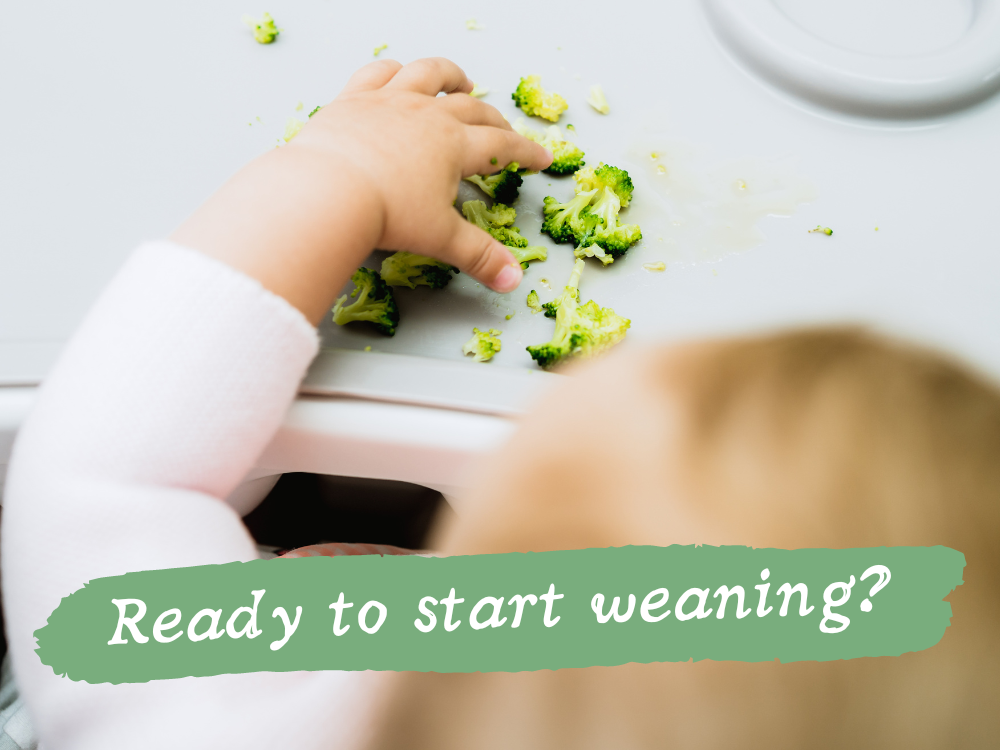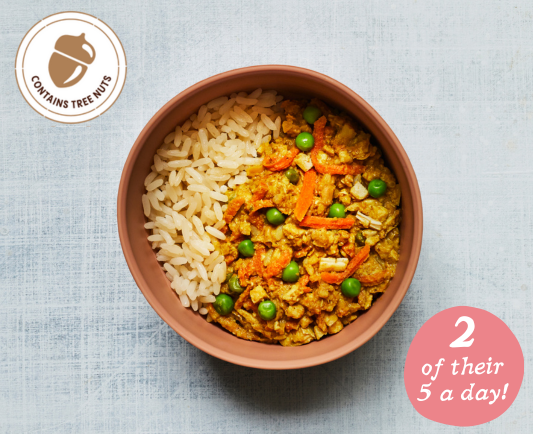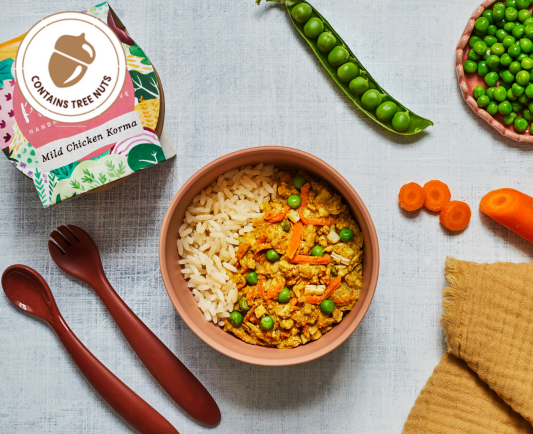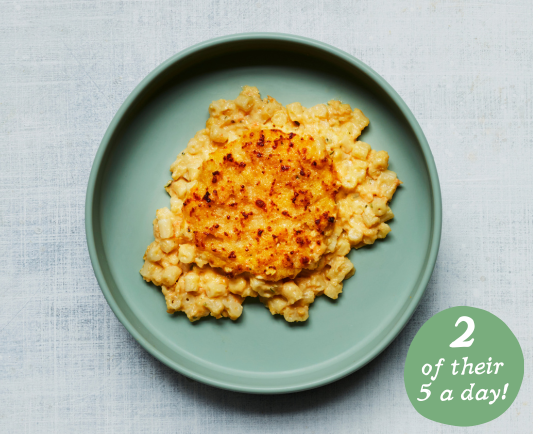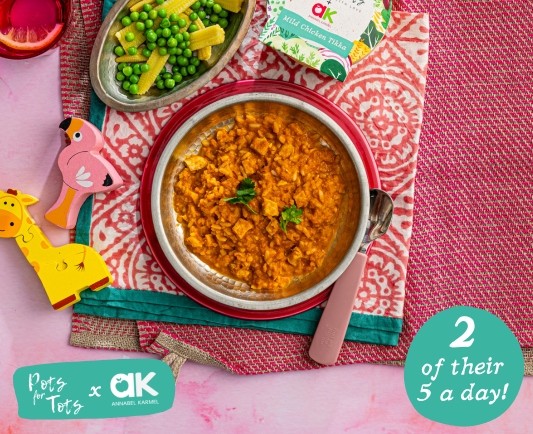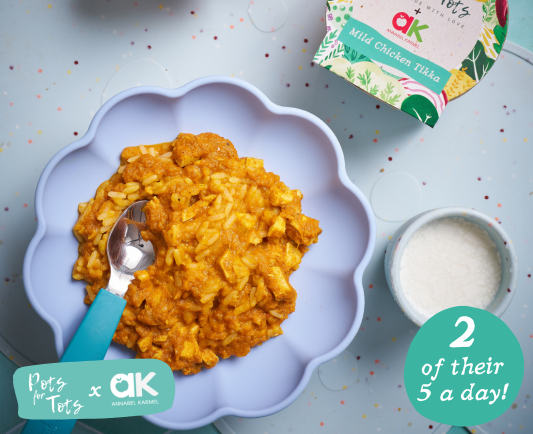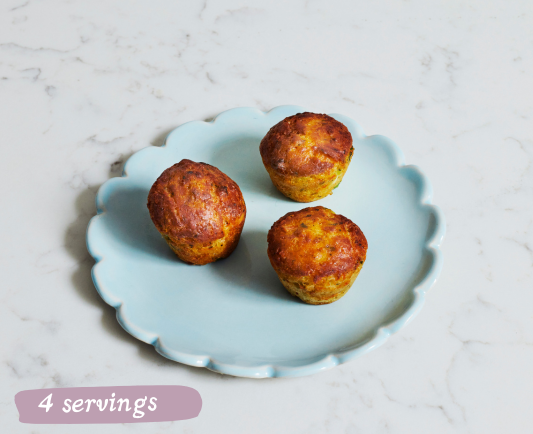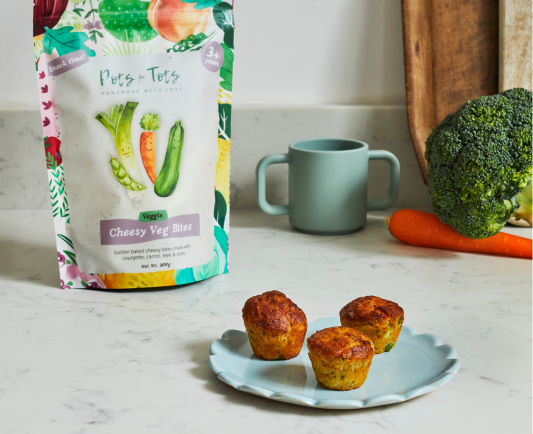Weaning… It’s understandable to feel anxious approaching this next milestone in your baby's feeding journey. To suddenly go from only feeding your little one milk to slowly introducing solids, we know first-hand just how overwhelming it can be. Especially with all of the confusing guidelines, nutritional noise and well-meaning (but sometimes unhelpful) advice out there.
We want to help make mealtimes as easy and stress-free as possible for you, so scroll on for weaning advice from Lucy, our resident Children's Dietitian, and tips from our team of parents who have been there and done that (and got the food-stained t-shirt!)…

Here are 7 weaning tips from Lucy Upton, Pots for Tots’ resident Children’s Dietitian...
1. Are you ready?
Understandably, there is lots of focus on your baby being ready to start solids, but parent preparation is so helpful too. It’s natural to feel worried, unsure and unconfident!
Many parents find it helpful to read up on common worries such as gagging vs choking, complete a first aid course, explore different weaning methods, and even prepare some foods to freeze. These strategies can help cultivate the right ‘starting solids’ mindset.
2. Is your baby ready?
There is still a lot of misinformation online about understanding when your baby is ready for solids. Developmental readiness should be the main focus, which is why there is some variability in exact timings for when babies start weaning. Most babies develop these key developmental signs of readiness around 6 months of age. They include;
- Your baby should be able to sit upright for a short time unsupported and have good head control.
- Your baby should be able to see something e.g. a toy, pick it up and bring this to their mouth.
- Your baby’s tongue thrust reflex should have diminished e.g. they keep food in their mouth, not just push it out.
You can find more support and information on the weaning signs of readiness on the NHS website.

3. Focus on variety not volume
Weaning is a process of learning to eat and is a very complex skill. Many parents worry that their baby doesn’t take much for the first few weeks and months, but this is normal. In those first weeks and months of weaning aim to focus on offering lots of variety, colour, and foods from different food groups and don’t get too hung up on portions. Every baby is different!
4. Get the right highchair
Seating to support your baby and help keep them safe whilst learning to eat can often be overlooked. Pick a highchair with an adjustable footrest (this helps keep babies stable and feeling safe when eating). If you don’t believe us - try eating your next meal with your feet not touching the floor!
5. Remember the end goal is the same
Be reassured there isn’t one ‘best’ way to start solids with your baby - purees, finger foods or a mixture - the end goal is the same. For your baby to learn the skills and gain the experience they need to eat a wide range of different foods with you as a family.
6. Let them get messy!
At Pots for Tots, we are team ‘let them get messy’ - exploring foods with all their senses is an important way for babies to learn about food, get familiar and comfortable. Whilst it can be easy to swoop in regularly wiping hands and faces, try to leave them to it and save the clean up for the end of the meal.
7. Don't get caught up in comparison
Try not to get caught in the comparison trap — it’s super common for parents to feel stressed during weaning just because they’re expecting things to look a certain way or because they’re comparing their baby to others. Each child will progress at a different pace, and down their own unique path (we all learn skills is slightly different ways). Try to focus on your baby first, and don’t get caught up in too much comparison.

And 3 more weaning tips from the Pots for Tots Team!
8. “Start slow and steady, and wean at YOUR pace. You don't need to go from zero to three meals a day immediately! I found it best to introduce my daughter Bluebelle to solids at lunchtime, as it was the calmest part of my day, meaning I was in the right mindset to offer her food” - Jazz
9. “Just because your baby pulls a face when they first try certain foods doesn't mean they don't like it. It just means it's a new taste - so keep exposing them to it. I made this mistake with a few veg and didn't give them to my girls again for ages as I thought they didn't like it!” - Verity
10. “Don't worry if it feels like your little one is really fussy to begin with and won't eat anything/will only eat purees, we found it so hard to get Margot to eat anything as a baby and now she's the most adventurous 5-year-old with food” - Katie

And there you have it! Hopefully, we have eased some of your worries and concerns as you step into the wild world of weaning! If you're looking for more support, we have a post all about cooking homemade baby food without salt, and also ten tips on how to introduce cutlery to your baby.

Finally, if you're looking for more practical tips, we're so proud and happy to tell you that our lovely Children's Dietitian, Lucy Upton has written her first book: The Ultimate Guide to Children's Nutrition: How to nurture happy, healthy eaters in the first five years. From milk feeds to weaning, fussy toddler phases to allergy worries — this book’s got your back. It covers what’s normal at each stage, plus loads of practical tips and ideas to help you feel more confident (and less stressed!) on your little one’s feeding journey. We all can't wait to read it!
Love, Team Pots for Tots x
